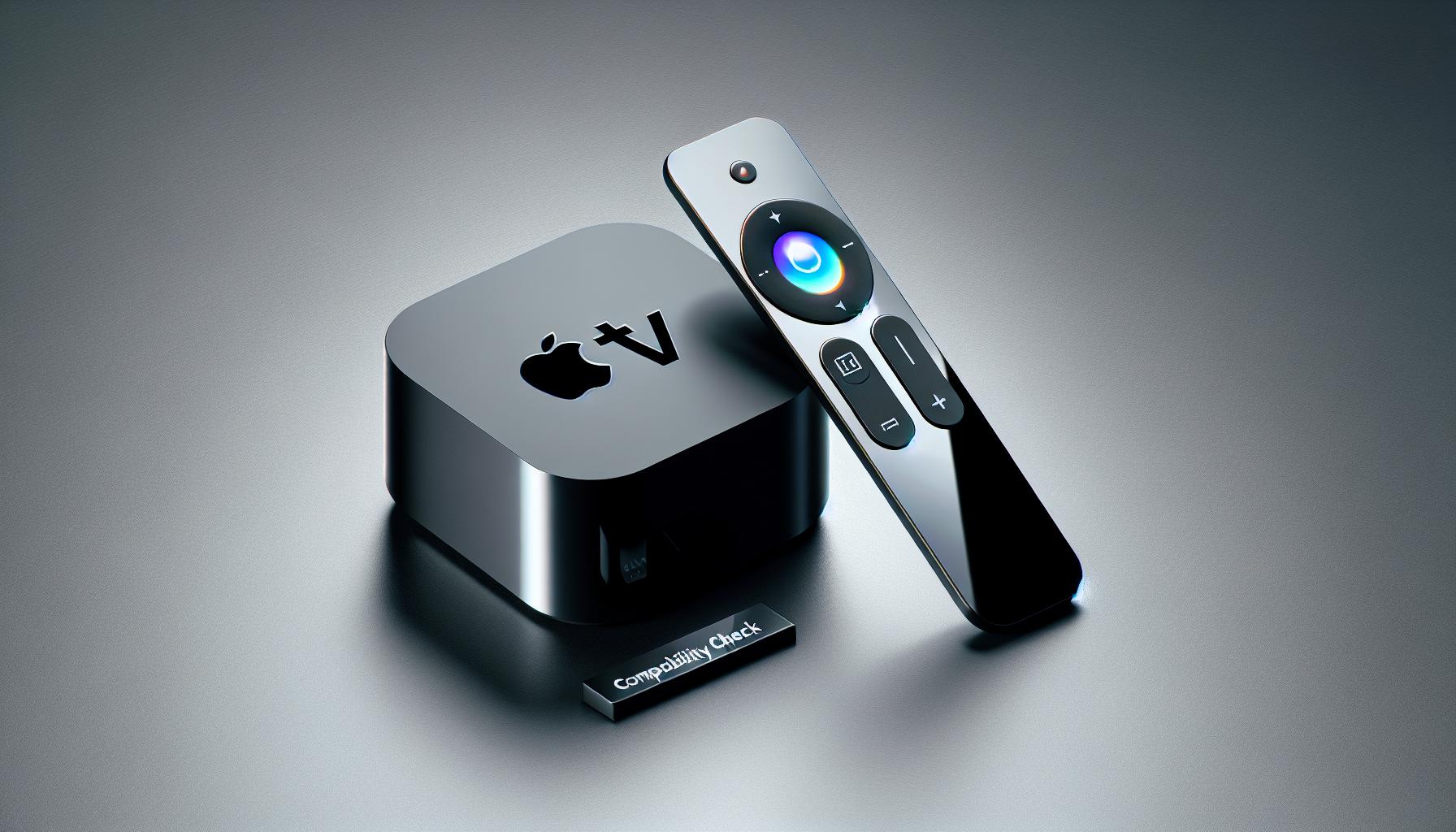Ever find yourself fumbling with multiple remotes just to watch your favorite show on Apple TV? It's time to simplify your life and learn how to program your Apple TV remote. This handy guide will walk you through the process, making it a breeze.
You might think it's a complicated task, but don't worry. With a few easy steps, you'll have your Apple TV remote programmed and ready to use. It's all about making your entertainment experience as seamless as possible. So, let's dive right in and get you set up.
Understanding the Apple TV Remote
The Apple TV remote, also known as the Siri Remote, is your primary tool to connect with your Apple TV. It's designed to be somewhat minimalist and might seem daunting if you're new to the Apple ecosystem. But don't worry! With a little bit of guidance, you'll be flipping through your favorite TV shows and movies with ease.
The remote has two main features you need to consider. On the upper part of the remote, you'll find a touchpad; this is not a button but a white part on which you slide your finger to traverse the Apple TV interface. The touchpad offers swipe-to-scroll functionality, just like your smartphone, and also provides clickable selections by pressing firmly down on it.
Below the touchpad, you'll find a few buttons that control a variety of functions. The "Menu" button acts as a back key or a Home button when held for a few seconds. The "TV" button takes you straight to the TV App, while the "Play/Pause", "Volume Up/Down", and the "Microphone" button for Siri all do exactly what one would assume.
One pivotal aspect is the pairing process that enables the remote and the Apple TV to exchange inputs over Bluetooth. It's worth noting that the remote automatically pairs with the Apple TV during the set-up steps, but you can also manually pair it anytime you wish.
Lastly, the remote relies on an inbuilt lithium-ion battery. Like all rechargeable batteries, the duration it lasts depends heavily on how much you use the remote. However, you'll find the battery life to be pretty impressive, providing weeks of use before needing to be plugged back in.
In the following sections, we'll delve deeper into using the remote, explain the different buttons and their functions, and most importantly, guide you on how to program it to enhance your Apple TV experience.
Step 1: Checking Compatibility

Before you dive into programming your Siri remote, it's essential to check compatibility. Not all Apple TVs or other devices may be compatible with the Siri Remote.
The Siri Remote, designed primarily for the 4th and 5th generation Apple TV models, including the Apple TV HD and Apple TV 4K, will sync right out of the box. This doesn't mean it won't work with other models. But you'll more than likely encounter limitations with the unique functionalities of the Siri Remote.
To ensure your train rides smoothly on compatibility tracks, follow the steps below:
- On your Apple TV, open Settings.
- Using the remote's touchpad, navigate to "Remote and Devices".
- Check the "Learn Remote" option.
If "Learn Remote" is visible, your Apple TV model is compatible with third-party remotes, increasing the chance of it being compatible with the Siri Remote. Conversely, not seeing this option could mean your Apple TV is unable to pair with a remote other than the one it originally came with.
Furthermore, you should also consider the console or other devices you intend to control using the Siri remote, such as a Blu-ray player or game console. Not all of these devices would support the Siri remote, so checking the compatibility of these devices beforehand will save you from potential headaches down the line.
After you've confirmed the compatibility of your devices, you're all set for the next step - pairing your remote. Now, you're one stride closer to a seamless entertainment experience that keeps the world at your fingertips. Isn't that what we're all here for?
Step 2: Pairing the Remote
After determining that your Siri Remote is indeed compatible with your devices, it's time to move to the next step: pairing. This step is integral to ensure that your remote can successfully communicate with your Apple TV.
Begin by ensuring that your Apple TV is on and properly connected to your television. Next, grab your Siri Remote and bring it close to the Apple TV. A rough distance of about 3-4 inches would suffice.
To formally start the pairing process, you'll need to press and hold both the ‘Menu’ and ‘Volume Up’ buttons together for a couple of seconds. An indication on your TV screen should pop up, essentially confirming that the pairing procedure is underway.
However, there might be instances when the process does not kick start as described. If your Siri Remote isn't pairing, it's advisable to charge it for about 30 minutes, then trying the process once more. Make sure your remote is unplugged from the charging point during the pairing operation.
Upon successful pairing, an on-screen prompt will notify you. Your Apple TV should now react to the commands issued from the Siri Remote.
It's important to note that devices besides your Apple TV, such as your game console or Blu-ray player, may not pair in the same way. For these devices, consult the manual or manufacturer's website for specific instructions.
Bear in mind that the Siri Remote can control only one device at a time. If you wish to use the remote with a different device, you'll have to unpair it with the current device first.
Remember, the core aim behind every step you take is to optimize your use of the Siri Remote. So, proceed with patience and remember that troubleshooting is a part of the process. By following these steps correctly, you're right on track to program your Apple TV remote efficiently.
Step 3: Setting Up the Remote for TV Control
Once you've confirmed the compatibility of your devices and paired your Siri Remote with your Apple TV, you're ready for the next step. Remember, the Siri Remote is capable of controlling one device at a time, so you need to set it up for TV control optimally.
Setting up the Siri Remote for TV control is quite simple and straightforward, just as with the pairing process. Understanding your remote's functionalities plays a significant role here.
Let's break the process down to some easy steps:
- Find your way to the Settings on your Apple TV. After this, navigate to Remotes and Devices which will open a new window.
- Once you're in the new window, you will find an option that says Learn Remote. Select it.
- Now the Apple TV will show a series of controls. You will match these controls with the corresponding buttons on your Siri Remote.
- The Siri Remote will send signals to the Apple TV, so make sure there's a clear path between the devices.
- Lastly, assign a name to your remote. This makes it easier to identify, especially if there are several remotes in use.
This is the primary process to set up your Siri Remote for TV control. Remember to be patient and follow the steps correctly. Missteps can lead to ineffective remote setup and hinder your experience with your Apple TV.
Sometimes, certain problems may arise during this process. Don't panic when this happens. Instead, follow the troubleshooting steps mentioned in our later sections to resolve the issue effectively.
After you've successfully set up the remote, remember that practice makes perfect. Don't get discouraged if you're having a hard time navigating at first. With continued use, you'll become fluent and this experience will enhance your Apple TV enjoyment.
Troubleshooting Tips

Even the most seasoned Apple TV users occasionally encounter hitches when programming the Siri Remote. Not to worry, we've got you covered with some quick Troubleshooting Tips!
If the remote doesn't seem to be working with your Apple TV, double-check the setup first. Confirm the Siri Remote is paired correctly by heading into your Apple TV settings. Are your Apple TV and the remote communicating? If not, attempt to unpair and then pair the remote again.
Issues may arise if your remote isn't charged sufficiently. The Siri Remote utilizes a built-in rechargeable lithium-ion battery; and when it's running low the capabilities of your remote can be skewed. Regular charging should be part of your routine to ensure usability.
The Siri Remote is capable of adjusting television settings like volume and power. However, convenience aside, this might cause a wrinkle in the programming process. Specified gestures and buttons must be matched with their corresponding TV controls. If there's fumble in this balance, reconfiguring the remote to the specific controls may be necessary.
Infrared technology in the Siri Remote communicates to the majority of televisions but there are exceptions. Make sure your TV is compatible with the Siri Remote for optimal use. Check the user manual or the manufacturer's website for this information.
If all else fails, connect with Apple Support. They’re an invaluable resource for troubleshooting and will assist in resolving your concerns.
This involves a sequence of steps, but it's a steady ride towards providing you with the absolute one-stop control of your Apple TV experience with the Siri Remote. Remember, even an expert was once a beginner. Happy troubleshooting!
Conclusion
You've now got the knowledge to master your Siri Remote. Navigating the touchpad, utilizing the buttons, and pairing your remote with your Apple TV are all within your grasp. Remember, practice makes perfect. The more you use your Siri Remote, the more you'll enhance your Apple TV experience. If you ever encounter issues, don't hesitate to revisit the troubleshooting tips. And remember, Apple Support is always there to help. So go ahead, grab that Siri Remote and make the most of your Apple TV. You've got this!
Frequently Asked Questions
What is the Apple TV remote also known as?
The Apple TV remote is also commonly referred to as the Siri Remote.
Both tapping and swiping motions can be used for navigation on the Apple TV remote's touchpad.
How does one pair the Apple TV remote with the Apple TV itself?
You must pair the remote and the Apple TV by choosing the setup option on the TV's settings menu, following the prompts to finish the process.
What is the approximated battery life of the Apple TV remote?
The Siri Remote generally has a good battery life, able to last several months on a single charge depending on usage habits.
What are some troubleshooting tips for the Siri Remote?
In case of issues, verify your setup, ensure the remote is charged, match gestures and buttons with TV controls, and check compatibility with TV. Do not hesitate to contact Apple Support for assistance.
Is practicing necessary in order to be fluent in using the Siri Remote?
Yes, regular practice with the Siri Remote can positively impact your user experience, allowing you to navigate Apple TV with ease and familiarity.




